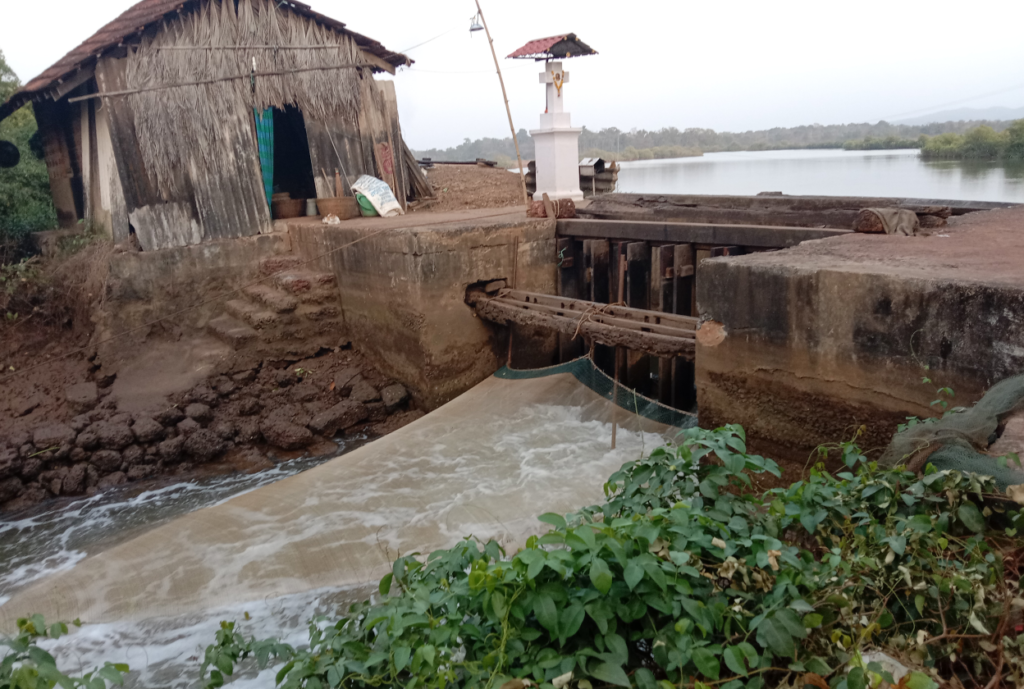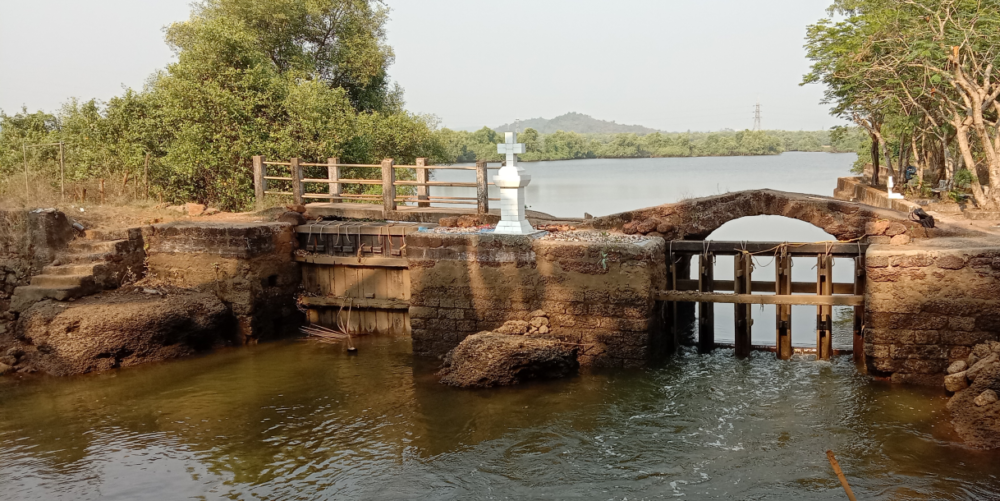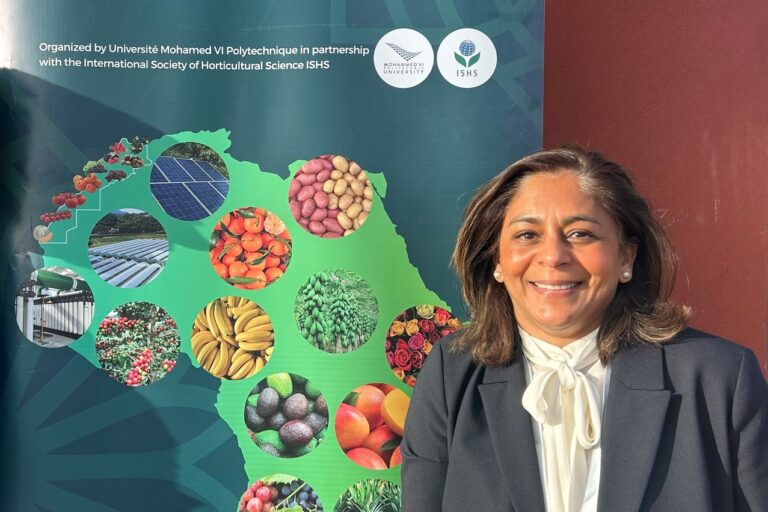By Neena Bhandari
Sydney, 04.04.2024 (IPS): Growing up in a khazan ecosystem, the traditional agricultural practice followed in the south-western Indian state of Goa, Elsa Fernandes would love sitting in a koddo, a woven bamboo structure for storing paddy. Her family members would pour paddy around her and with the growing pile, she would rise to the top and then jump down with joy.
“Rice crop for us meant play, work and earnings. Whatever I am today is because of the khazans,” says Fernandes, an environmental architect and president of the Goa Khazan Society, an organization of concerned citizens and experts dedicated to preserving the khazan ecosystem.
The khazan ecosystem has played an intrinsic role in alleviating the effects of soil salinization, conserving biodiversity, and ensuring food security for over 3500 years. But this sustainable agriculture practice is facing increasing pressure from neglect, mismanagement, environmental degradation, and commercialization of land and fishing rights, even as threats posed by climate change loom large.
Experts say it is imperative to conserve the khazan ecosystem, which comprises of low-lying floodplains, reclaimed by building bunds (dykes), embankments and sluice gates to prevent ingress of saline tidal waters, thereby creating nutrient-rich fertile soil for agriculture, pisciculture and salt making.
Symbiotic relationship
“It epitomizes a symbiotic relationship between the people and the land, providing a sustainable source of livelihood throughout the year”, says Fernandes, whose parents were paddy and salt farmers in Santa Cruz village near the state capital, Panjim.
She recalls growing up in a house where food was aplenty and daily activities revolved around the annual crop cycle. The most important room in the house would be the paddy room. The khazans would be used for cultivating and harvesting rice during monsoons and vegetables during winters. From October, the traditional process of stacking, boiling, drying, removing the husk and storing rice would begin.

“During summer, we would play `hop, skip and jump’ as long bamboo sticks were rolled to flatten the soil in the salt pans. Our family produced about 600 to 700 sacks of salt and we would queue with other salt farmers to load them on boats anchored on the riverbank. Records show that some of this salt was exported as far as Burma (Myanmar), but now salt harvesting is in complete decline and that is impacting the livelihood of communities reliant on it,” Fernandes adds.
Her reminiscences depict a vivid image of each season heralding a rhythm of activities revolving around the khazans. From repairing the souem or bamboo mats used for drying rice to preparing the soil for salt harvest, she enumerates the communal efforts to maintain the khazan infrastructure that were rooted in traditional ecological knowledge passed down through generations.
Ecosystem resilience
Khazans represent a holistic approach to climate resilience, integrating ecological functions with agricultural practices, essential for ensuring long-term food security.

Shilpa Bhonsle, an expert in rice research, explains that because Khazan agriculture practice encourages the cultivation of a diverse range of crops, including rice, pulses and vegetables, as well as aquaculture, it enhances ecosystem resilience by reducing the vulnerability of crops to pests, diseases, and climate-related stresses.
Underscoring the importance of cultivating indigenous rice varieties — Muno, Shiedi, Korgut and Damgo, which possess greater genetic diversity that equips them with a range of adaptive traits such as tolerance to salinity, drought and waterlogging, she says, “This makes them potentially more resilient to climate variability and extreme weather events compared to high-yielding varieties”.
“Traditional farming practices, such as mudflat ploughing, shellfish cultivation and organic manure application help maintain soil health and fertility”, says Bhonsle, Assistant Professor in the Department of Botany at Dhempe College of Arts and Science in Panaji.
“Additionally, traditional irrigation systems optimise water use and reduce dependence on freshwater sources in a khazan. These sustainable practices, combined with modern adaptation strategies, contribute to mitigating the impacts of drought and water scarcity exacerbated by climate change,” she adds.
Currently, the khazan ecosystem spreads across approximately 17,200 hectares in Goa, which has a complex interconnected system of water channels wherein the Arabian Sea on its western boundary connects to the inland through rivers and estuaries.
Climate-smart infrastructure
“The khazans incorporate several functions relevant to climate-smart infrastructure, thus protecting these fragile coastal agriculture ecosystems from climate change impacts to a large extent”, says Sangeeta Sonak, a marine microbiologist who is working on the khazan ecosystem and molluscs of Goa.
“In a khazan, the inner smaller dykes help retain water inside the fields; the thick outer dykes act as a shield against riverine water incursion; and sluice gates regulate water flow by automatically responding to tidal pressures to flush fields and keep soil and water salinity in check, thereby helping with water purification and waste treatment in fields”, explains Sonak.
“During monsoons, when the salinity is low or absent, riverine water enters fields through sluice gates. Excess water is stored in a shallow pit called the poiem for irrigation during dry monsoon spells, thereby offering flood and drought protection. In summer, the slightly saline brackish water that enters the fields helps control pests and insects which are harmful to crops,” she adds.
“But the modern age has scant respect for earlier engineering wisdom”, says Claude Alvares, eminent environmentalist and director of the Goa Foundation, an environmental monitoring action group. “The khazans are low lying areas and Goa is threatened with global warming driven sea level rise. If the embankments are not safeguarded and strengthened now, the state will never be able to protect itself from the rigours of climate change”.
He says, “The khazan ecosystem survival is threatened by persons who break the embankments to allow salt water and fish, which is more lucrative than grain, into these lands. After the salt water comes in, and remains there, it leads to a proliferation of mangroves which are stupendous colonizers.”
Furthermore, the traditional mud dykes are being replaced with concrete structures. “This is not only damaging our water bodies, but adversely impacting the biodiversity, environment, health and heritage,” says Fernandes. She suggests that contracts for repairs and maintenance of dykes should be given to the locals, which would not only provide them livelihoods, but also foster local engagement and a circular economy based on sustainable methods.
Civil society advocates are seeking international recognition and support for preserving this cultural and ecological heritage; and advocating for listing khazans under the United Nations Food and Agricultural Organisation’s Globally Important Agricultural Heritage Systems (GIAHS).
For Fernandes and countless others, khazans are more than just a livelihood, it is a way of being.
Continue Reading on Inter Press Service
© Copyright Neena Bhandari. All rights reserved. Republication, copying or using information from neenabhandari.com content is expressly prohibited without the permission of the writer and the media outlet syndicating or publishing the article.Climate



Khazans an engineering marvel need to be preserved, and the government as well as the public need to sit up and take cognisance of this cultural and ecological heritage of Goa.
Thanks to Neena Bhandari for helping to raise awareness on this issue!